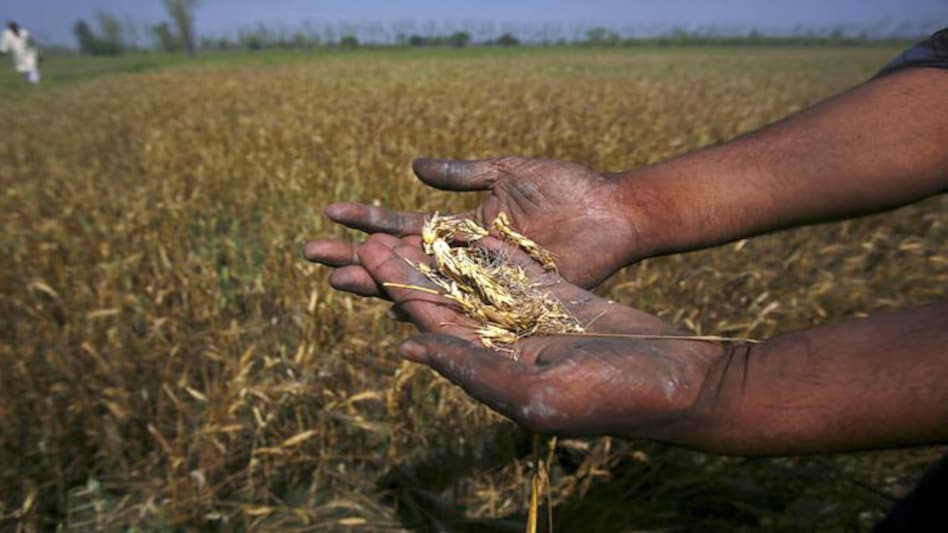India’s dry monsoon spell could be the next big worry for world’s food supply, global inflation

India’s dry monsoon spell could be the subsequent massive fear for the world’s food supply and worldwide inflation. Since India, via some distance, the world’s biggest exporter, has had a loss of rain in a few regions, planting regions for rice have contracted to their smallest length in nearly 3 years.
This may pose a brand new challenge to the world’s food supply. India’s ability to sell rice is in jeopardy at a time when people worldwide are dealing with increasing food prices and recurrent inflation. The total area planted with rice has decreased by 13% so far this season as a result of a lack of rainfall in several locations, particularly West Bengal and Uttar Pradesh, which produce 14% of all the country’s rice.
Traders are concerned that a drop in rice production might make India’s fight against inflation more difficult and might lead to export restrictions. This type of decision can have significant effects on the billions of people who rely on this food staple. To defend food safety and keep neighborhood costs down, the authorities have already restricted wheat and sugar exports from India, which accounted for 40% of the world’s rice trade. India’s rice costs have increased, which shows manufacturing concerns.
According to Mukesh Jain, director of rice shipper Sponge Enterprises Pvt. Ltd., rising demand from Bangladesh has caused prices of some types to rise by more than 10% in recent weeks in major developing states like West Bengal, Odisha, and Chhattisgarh. According to him, free-on-board export pricing could rise to $400 per ton by the end of September from as low as $365 now.
The majority of the world’s rice is produced and consumed in Asia, where it is essential for the stability of the political and economic system. Compared to the surge in wheat and maize prices following Russia’s invasion of Ukraine, rice prices were regulated due to extensive manufacturing and stockpiling, saving you from a worsening of the meal calamity.
The monsoon’s success and the quality of the Indian rice crop can have a big impact. Some agricultural experts believe there may be enough time to grow additional plants and fill in some of the gaps. Rainfall is expected to be abundant in August and September, potentially causing a surge in agricultural manufacturing. Farmers have a decreasing mood. According to farmer Rajesh Kumar Singh, 54, due to a lack of rain in June and July, he became the best capable of sowing rice on half of his seven acres (2.8 hectares) of land.
He declared, “The function is without a doubt perilous.” Rice prices are under pressure, according to Himanshu, a professor at Jawaharlal Nehru University who goes by one name. The prospect that it might rebound is unrealistic, he said, noting that a fall in output poses a hazard to inflation because little or no planting takes place past mid-july.
Rice may also offer a brand new impediment in India’s combat against inflation. This year, purchaser costs persisted to exceed the Reserve Bank of India’s tolerance level of 6 percent, which prompted a dramatic boom in hobby rates.
The main banking institutions may raise borrowing prices further since the advantage of lowering commodity costs, including those for gas and vegetable oil, is strongly negated by using a weaker rupee this week.
A chronic geographical difference in rainfall, according to Sonal Varma, an economist at Nomura Holdings Inc., may have a horrible effect on agricultural output, which may subsequently have a bad effect on the financial boom and inflation. Top Clients India sells rice to more than a hundred countries, with some of its top customers being Bangladesh, China, Nepal, and certain Middle Eastern countries.
There are a few promising signs and symptoms of the worldwide food safety situation. In the imminent weeks, the United States is anticipated to supply a bountiful harvest of wheat, whilst Ukraine has dispatched its first grain shipment on account of Russia’s invasion.
According to Siraj Husain, a former secretary of India’s agricultural ministry, the government should reconsider its policy of allocating rice for ethanol production because India’s paddy crop is expected to fail in several regions. To reduce its gas costs, India wants to increase ethanol production by using more sugar and rice. An “meals vs. gas” argument has been caused by utilizing the upward thrust in meal expenses that has accompanied the warfare in Ukraine.
Husain said that it turned into a tough decision to decide the best quantity of output loss at this time. However, he believes that at current prices, there may be little incentive to allocate rice for ethanol production. Rice Is Now 30% Costlier. Due to a disaster and immoderate demand, rice costs within the country have expanded by 30% as of early June for all kinds.
Due to increased demand from nations like Saudi Arabia, Iraq, Bangladesh, and Iran, in addition to a loss of paddy land in numerous Indian states, costs have expanded. Until July 29, India’s general paddy acreage had turned into a round 13.3% decrease than it had been for the duration of the identical time in 2021. The number one generating states of Jharkhand, Uttar Pradesh, Chhattisgarh, Odisha, Bihar, and West Bengal have all suffered due to the dearth of rain.
Additionally, this has substantially heightened concerns of a deficit in grain manufacturing, and growing export demand has pushed up costs. The area under rice cultivation within the aforementioned states has been reduced by 3.7 million hectares as of July 29 in comparison to the preceding year.
The location shortfall is equal to about a 10th of the 39.7 million hectares of Kharif rice cultivation for the entire country. With reduced plantings, output has been placed in danger via a means of approximately 10 million tons at a slight yield of 2.6 tons per hectare.
Up till July 29, the monsoon rains have been above average, totaling 9% better than the long-time period average. According to figures from the India Meteorological Department, they’re nevertheless falling short in primary Indian states that produce rice and are dependent on rain.
The modern-day rainfall deficit is a concerning 47% in southern Bengal, 52% in north Uttar Pradesh, 41% in Bihar, and 50% in Jharkhand. Telangana, the other foremost rice producer, is presently coping with intense flooding.




